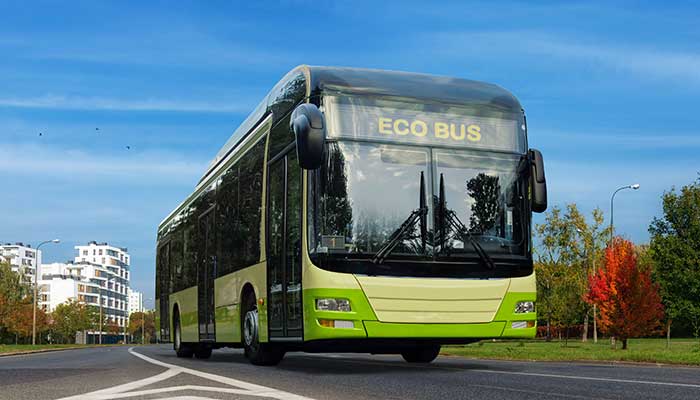The Top 5: Reasons Public Transport is Essential for Sustainable Urban Living

Public transport is indeed one of the most crucial elements for growth and development. Apart from providing basic transport facilities to the citizens, it also forms the backbone of industrial growth from all walks of life. Focused and planned investments in public transport infrastructure have the potential to realise the goal of transformation of the countries aiming for green energy transition and sustainable future.
As per the United Nations, only half the world’s urban population had convenient access to public transportation by 2019. In addition, many cities have a high prevalence of informal transport systems, which are often deficient in terms of regularity and safety, incentivising individual transport vehicles.
The benefits of public transport have made governments the world over bring policies to convince their citizens to opt for public transport. Recently, Luxembourg made all forms of public transport free, starting in March 2020. Chambly (Canada), Tallinn (Estonia), Avesta (Sweden), Dewsbury (UK), Perth (Australia), Samokov (Bulgaria), and Mariehamn (Finland) are some of the important places where free public transport for all has made people rethink their commute choices. Mocves to make it free for just one gender like women, as done in some states in India like Delhi and Karnataka remain political gimmicks, as commensurate improvement in the infra has not been done.
Doing it for the right reason is key. We look at the top 5 reasons why Public Transport is an important part of growth, development, and even decarbonization.
#1 Lower Emissions Per Passenger
The transport sector is one of the major emitters and most of the emissions from the sector come from private vehicles such as cars. In India, the transport sector is responsible for about 13.5 per cent of the country’s energy-related CO2 emissions.
Greater utilization of public transport services over personal vehicle use is one of the best ways to reduce emissions from the sector. As per the International Association of Public Transport, many cities have successfully managed to reduce CO2 emissions by as much as 50 per cent by reducing or limiting the flow of private cars. Further, a modal shift away from personal transport modes enables emissions reductions by avoiding reliance on new technologies that are often costly and unavailable commercially.
#2 More Fuel Efficient
Public transportation excels in fuel usage efficiency when compared to private cars. This is true even for electric cars, as individual vehicles consume several times more electricity than a train or metro for transporting the same number of individuals. Therefore, opting for public transport reduces fuel consumption and minimizes electricity usage, making it a more sustainable choice for transportation needs.
Public transport vehicles such as buses and trains are designed to carry a larger number of passengers, resulting in a higher occupancy rate and more efficient use of fuel per passenger. This is one of the reasons for using big buses or even trains as a means of public transport, to begin with.
This is in contrast to private cars, which often carry only one or a few occupants, leading to less efficient fuel usage per person transported. Therefore, using public transportation can help reduce fuel consumption and contribute to overall energy efficiency.
#3 Cities Running Out of Space for Cars
Traffic remains the biggest menace for the road transport sector, with many of the important cities across the globe, such as London, Bengaluru, Sapporo, Bogotá, and several others, facing sluggishly moving traffic on roads due to congestion. This congestion is only going to increase with the growing population and preference for private vehicles. With increased vehicular density, air quality has taken a toll, causing health problems for city dwellers. A shift to public transport can solve this issue with ease.
#4 Low Cost
Public transport is generally more cost-effective than owning and maintaining a private vehicle. Expenses such as fuel, insurance, parking fees, and maintenance are significantly reduced or eliminated when using public transport.
Furthermore, public transport can fill the need of the growing population without considerable expansion of the existing infrastructure. For example, in India, the road network grew by 75 per cent between 2000 and 2015. On the other hand, the country’s rail network largely remained the same for the last 60 years, with relatively limited investment. Policies have focused on electrifying railways but not their expansion and maintenance, saving considerable funds for the government.
#5 Safer Travel and Enhanced Cityscapes
Public transport is also a safer way to travel. The systems are regulated, and drivers are trained professionals, which enhances passenger safety. this type of transportation system also reduces the number of vehicles on the road, leading to a lower risk of accidents.
Further, with the increasing influx of cars into city centers, the available space for cyclists and pedestrians is shrinking. Cars parked in areas connected to sidewalks further narrow the road space, making it unsafe for pedestrians or cyclists. Embracing public transport would alleviate these issues by reducing air pollution and freeing up urban space. This positive change would create a more enjoyable and secure environment for cyclists and pedestrians, enhancing the beauty and tranquility of cityscapes worldwide.




